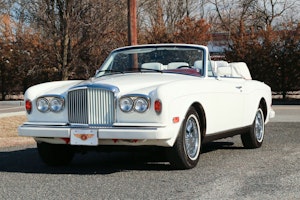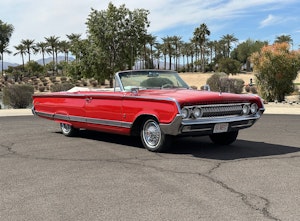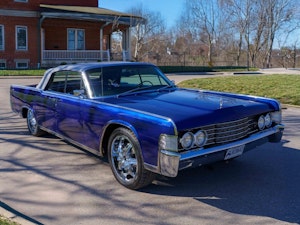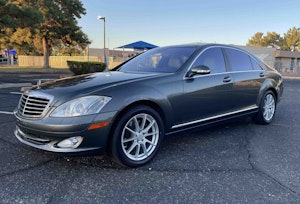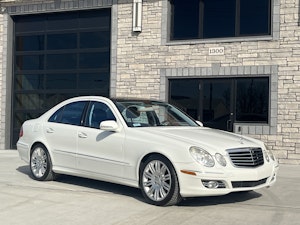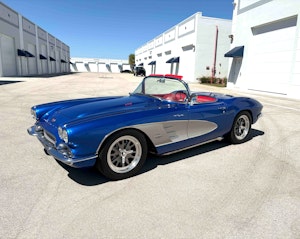Media | Articles
Lightning, lottery winners, and texting crashes
Last week I wrote about the dangers of low-quality tires. To put the problem into a proper (and shocking) perspective, I compared the number of annual on-the-road deaths attributed by the NHTSA to tire failures with the number of annual on-the-road deaths attributed by the NHTSA to cellphone distraction. I was hoping that you, the reader, would respond with something along the lines of “Gosh, looks like these crappy tires are a real problem, and maybe I should take them as seriously as I take distracted driving.”
No such luck, at least in the majority of responses. Instead, you overwhelmingly told me that you believed “distracted driving” to be a much greater and deadlier problem than tire failures. Some of you said that the stats were wrong. Others said “It doesn’t matter which is a bigger problem—we need to fix distracted driving first!” And a few of you, the really honest ones, said “I just don’t believe the statistics, because they don’t align with my own feelings, observations, or experiences. Distracted driving has got to be a bigger problem than the NHTSA says.”
If you know me personally, you know that I am absolutely obsessed with the reliability of conventional wisdom, or lack thereof. I absolutely live for examples of “old wives’ tales” being more reliable than the latest medical thinking—or for counterexamples where the statistical or scientific reality of a situation is so far away from what “everyone knows” as to be truly shocking. I spent a lot of my life programming computers to deliver reliable real-world results in fields as diverse as online sweepstakes and oncology-medication dispensing, so I have an authentic and professional concern with separating speculation from reality.
So, as Alexander Pope once wrote, let’s flap this bug with gilded wings. Let’s take the emotion out of it, because many of you have an emotional investment in this idea that cellphones are literally as bad as drunk driving—or worse. Let’s just see how big of a problem “distracted driving” via phone truly is. Not because we want to excuse it, or because we want it to be ignored, but because this is too important an issue to address with our feelings.
NHTSA attributed 3166 deaths to “distracted driving” in 2017. This is a problem that predates the smartphone by decades—one of history’s most prominent VW dealers and distributors was killed on his bicycle thirty years ago by a young woman who was reaching into the back seat of her car for a cassette tape. You can be distracted by anything from your car stereo to a bag of Fritos. So NHTSA does its best to break it down a bit.
Marketplace
Buy and sell classics with confidence
As I noted before, NHTSA doesn’t have the most reliable data at hand. While I have nothing but admiration for the Thin Blue Line, I’ve also personally watched highway patrolmen wildly mis-evaluate post-crash evidence. Car and Driver once hilariously quoted a cop who said that a 1983 Porsche 928 was going “about 200mph” at the moment of impact. Don’t get too salty about it. The men and women who evaluate motor-vehicle fatalities have to do so under time pressure, in bad weather, at all hours of the day and night, and often with just a fraction of the help they’d need to do the job right. In the modern “dashcam era” we frequently see evidence after the fact which flatly contradicts the written police report, and no one is surprised by that.
In other words, we’d be foolish to say that the NHTSA really knows exactly why all these crashes happened. Regardless, let’s roll with the data for the moment. The latest report says
In 2017 there were 401 fatal crashes reported to have involved cell phone use as a distraction (14% of all fatal distraction-affected crashes). For these distraction-affected crashes, the police crash report stated that the driver was talking on, listening to, or engaged in some other cell phone activity at the time of the crash.
Feel free to read the report yourself. I’m personally bothered by NHTSA’s blithe assumption that there is a margin of error in their reporting but that the margin of error has to be in the direction of underreporting distraction. Logically speaking, there’s no way to be certain. NHTSA claims that some people refuse to admit they were on their phone at the time of the crash, and that’s true—but I’ve also heard of crashes where the passenger was using a phone and the police attempted to pin that phone on the driver.
401 fatal crashes is a lot, isn’t it? I mean, it’s 401 too many. If you lost a loved one last year to a distracted-driving crash, it’s not a consolation to think that the tragedy was dammed close to a one-in-a-million event. And it’s understandable that you’d want any and all actions taken to eliminate distracted driving. The problem is that we, as a society, willingly accept all sorts of occasionally fatal results in the name of convenience. Consider the ride-sharing service Uber. Do you use it? I use it a hundred times a year. It’s very popular. In 2018, there were over three thousand sexual assaults in Uber cars, fifty-eight traffic fatalities—and nine murders! Keep in mind that American motorists and passengers outnumber global Uber customers by about six to one, so you’re… hmm… about forty times as likely to be sexually assaulted in an Uber during any given year as you are to be killed by a distracted driver. Got a preference as to which you’d rather endure?
You can rest assured that Uber won’t be closing its doors in 2020—and you can also rest assured that people will still use their phones behind the wheel in 2020, no matter what kind of penalties you apply or technological countermeasures you implement. In both cases, the juice is apparently worth the squeeze.
Here’s another one. Large trucks, by which I mean “Class 8 tractor-trailer”, not “F-250 SuperCab”, killed 4951 people in 2018. The burden of those deaths fell in hugely uneven fashion on the people who were not driving the trucks: 885 deaths in the trucks, 4066 in the passenger vehicles surrounding the trucks or among pedestrians unlucky enough to be in the way. So here’s an unpopular statement for you, based on those numbers: if you are on the freeway and your options are to drive next to someone who is playing Fortnite on their phone or to drive next to an 18-wheeler, maybe you should pick the smartphone addict.
Incidentally, as someone who has survived 26 years of motorcycling on American roads without a single incident, I didn’t need the actual data to know about the relative dangers. I’ve had smartphone users merge into my lane a hundred or more times, and I’ve always been able to predict or account for their actions. But semi-trucks are whispering death for motorcyclists. If the blown tires don’t kill you, then the complete and total inability of truck drivers to estimate safe stopping distances will. The vast majority of the times I walked into my house, hung my helmet on its hook, and said “I’m never riding a motorcycle again,” there was a truck of some sort involved.
What about drunk driving, which many of you think is equal to or even lesser than distracted driving? Get real about that, please. Drunk drivers accounted for 10,511 fatalities in 2018—but if you want to understand the true scope of the problem, you need to consider just what percentage of people are out there driving drunk at any given time compared to how many are operating a cellphone. That’s something we can’t know, but I’m willing to guess that it’s a tiny fraction. Maybe five percent. Maybe one percent. Equating cellphone use to drunk driving is like equating household firearm ownership to playing Russian Roulette with two out of six chambers loaded. Both of them can lead to you getting killed, but the deck is stacked for the latter.
We’ve already covered how faulty tires are deadlier than cellphone use—although there’s some statistical smoothing to be done there as well, since:
- Not everyone uses a cellphone;
- Everyone uses tires;
- But many (most) modern tires have a failure rate which is statistically zero, meaning that;
- Some tires are hugely, terrifyingly more dangerous than using a phone.
Having covered all the things which are more likely to kill you than phone-related crashes, let’s see if we can find something which happens at a similar rate, even if it’s not vehicular. The NOAA says that, on the average, 51 people a year are killed by lightning. So cellphone distraction is perhaps ten times more dangerous than lightning, since not everyone in the country uses a car but only the most Morlock-esque among us never go outside.
Is there a well-known event which is statistically closer? Turns out there is. There are about 250-300 winners every year of major lotteries in the United States. I’m referring to the six-figure hitters and above—Powerball, SuperLotto, all those. The kind of lotteries which change your life if you win them, not the $201 or whatever you get from the OhioLotto Pick3. That’s fewer than 401—but wait, only one-fourth of Americans play the lottery, while more than ninety percent of us are in a motor vehicle at some point during the year.
Let’s run the numbers… oh boy, this doesn’t look good. Or it doesn’t look bad, depending on what you’re expecting. Looks like the average American lottery player is about three times as likely to win the big lotto as he or she is to die in a distracted-driving crash.
Don’t blame me. I don’t make the numbers.
It gets really uncomfortable when we start talking about the cost of saving the lives lost to distracted driving. Developing any system which effectively prevented in-car phone use would cost billions of dollars. Heck, even a $10 device added to new cars would cost $150M per year or more, and the average teenager could circumvent it in five minutes. Now let’s take a look at suicides among men from ages 45-54. This is the group most likely to commit suicide, and as a 48-year-old man I have some idea why. 6500 of us are dying every year. The most common cause: loss of job or financial embarrassment. So what if the government were to create a “Don’t Kill Yourself Tomorrow Fund” and put $150M a year into it? If you were a man aged 48-54, you could go get some help from that fund. Let’s say that $100,000 would fix your immediate problems and prevent you from killing yourself. We could prevent 1500 suicides a year by just handing out cash, which is better than reducing the cellphone accident rate down from 401 a year to something that is less than 401 but also certainly not zero.
Wait a minute—I have an even better idea, although it doesn’t benefit me personally the way the above plan would. You take that $150M and you install 225,000 sets of brand-new tires every year on automobiles operated by people on the fringes of our oh-so-globalized-and-Friedman-flat economy who are currently running on cords. How many lives would that save? The average set of modern tires will run five years under normal usage, so once the program was well and truly rolling, so to speak, you would be keeping one million motorists out of severe danger on a rotating, so to speak, basis. Betcha that saves more lives than some anti-phone measures which will be approximately as easy to enforce as Jimmy Carter’s double-nickel.
Which brings us to the stickiest point of today’s column: The NHTSA says that excessive speed killed 9378 people in 2018. That’s about 20 deaths for every cellphone death. Ask yourself, dear reader: You say that the drivers around you can’t be trusted to use a phone, but don’t you feel that you are personally entitled to break the speed limit because of your skill, your experience, or the immense capabilities of your enthusiast vehicle? The statistics suggest that you are twenty times as dangerous as that person in the lane next to you browsing Instagram while driving.
That’s the problem with turning over this statistical rock: you never know what kind of nightmare bugs will come scurrying out. But that doesn’t mean we should stop looking. It’s always better to know the absolute truth. Everything else, in the long run, is merely a distraction.


